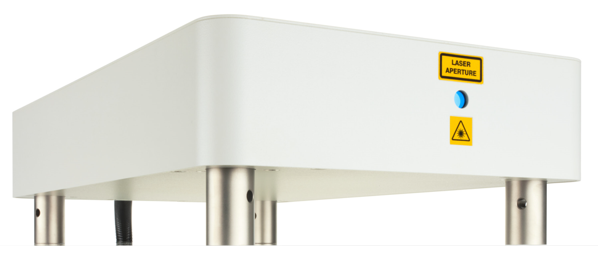Members Login

Channels
Special Offers & Promotions
SHG microscopy imaging of biological samples


Chromacity Ltd., in conjunction with the Institute of Genetics and Medicine, Edinburgh and ICFO* Barcelona has published a report demonstrating how the ultrashort pulse width of its Chromacity 1040 femtosecond laser is ideal for generating a second-harmonic response from a wide range of biological samples.
In recent years, Second-Harmonic Generation (SHG) microscopy has established itself as the technique of choice for the study of crystallized biomolecules such as starch, collagen and myosin. Unlike fluorescence-microscopy, SHG microscopy does not involve the creation of excited electronic states, so cell viability issues associated with heating and photo-bleaching are reduced.
The report describes typical results from collagen in liver tissue samples generated by SHG microscopy using a Chromacity 1040 laser as the excitation source. In these experiments this laser is shown to be an ideal source for an SHG microscopy system as it allows researchers to generate exceptionally clear, high-resolution images because of its excellent beam quality, ultra-fast pulses, and high average power levels.
Further by operating at near infrared wavelengths, the Chromacity 1040 enables the construction of 3D images of specimens by imaging deeper into thick tissues. Design optimised to operate at 1040nm, SHG microscopy using a Chromacity 1040 laser enables the direct visualization of tissue structure (in situ) as it relies only on species present in the sample to provide a contrast.
About Chromacity Ltd
Chromacity Ltd. is a world leader in the design, development, and manufacturing of advanced ultrafast pulsed fibre lasers. Based in Edinburgh, UK, the company specialises in fixed wavelength femtosecond and picosecond optical parametric oscillator (OPO) based tuneable laser systems. Based on a novel patented laser architecture that delivers ultra stable long-term performance, the fixed wavelength femtosecond fibre lasers work at 1040nm and 920nm, and the tuneable picosecond OPO lasers work across the near infra-red and mid infra-red wavelengths from 1.4um to 12um. Lasers from Chromacity Ltd. are simple to use, with no specialist support required to operate them – you turn them on, configure and use. These compact, air-cooled devices offer unrivalled long term pulse stability without the need for on-going maintenance.
* IFCO – The Institute of Photonic Sciences, Barcelona, Spain.
Media Partners


